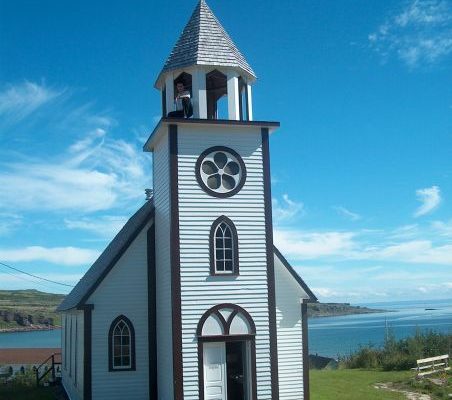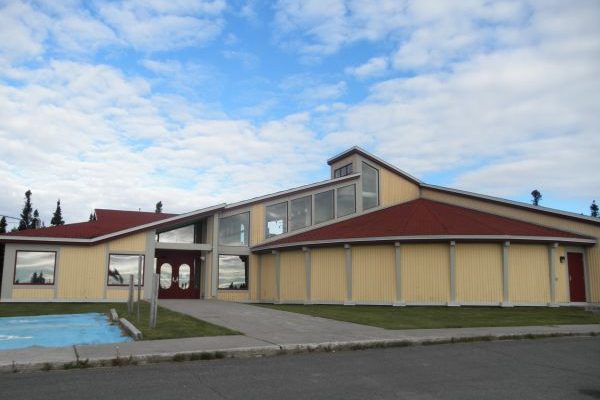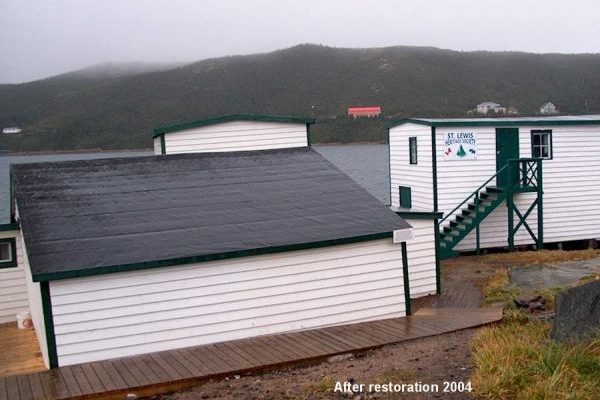Battle Harbour Heritage Properties
Situated on a small, near-shore island, Battle Harbour was for two centuries the economic and social centre of the southeastern Labrador coast. Mercantile saltfish premises first established there in the 1770s developed into a thriving community that was known as the “Capital of Labrador”. Today, the site has been restored
Gateway Labrador Visitor Centre
The complex is home to the Edmund Montague Exhibit Hall which has on display many artifacts representing Labrador West and the entire Labrador region – its history, culture and people. As well, the hall showcases the fur trading and mining history of Labrador. As Labrador West is the only gateway
Gateway to Labrador Visitor Centre
The Gateway to Labrador Visitor Centre is a restored early 20th century, gothic revival-style church. The Gateway is a handsome building with white clapboard exterior, pointed arch windows, the hexagonal-roofed bell tower, and a signature cinquefoil window. The interior of the Gateway is equally striking with a pleasing combination of
K’Taqmkuk Mi’Kmaq Museum
The community of St. George’s is an area rich in Mi’kmaq history. Earliest occupation of the area is uncertain, however the area known as “Seal Rocks” which is now a part of the community of St. George’s, is well documented as being the largest and principle Mi’kmaq settlement in the
Labrador Heritage Museum
The Hudson Bay Store Museum concept includes the rehabilitation and adaptive reuse of the existing 1923 Hudson Bay Building, display of original artifacts, and preparation of interpretive displays. The Hudson Bay store has had an important role in the development of the community. The exterior storefront has been rehabilitated and
Labrador Institute Information Centre
The Labrador Institute has been Memorial University’s permanent presence in Labrador since 1979. Collections are predominantly archival and library, but as an important cultural and educational institution, the Labrador Institute also maintains close ties with the museum community. The Institute has collaborated on several exhibitions of art and artifacts in
Labrador Interpretation Centre
Labrador Interpretation Centre – a division of The Rooms Permanent Exhibition: The Past is Where We Come From At the Labrador Interpretation Centre you’ll discover the founding peoples of Labrador – Innu, Inuit, the People of Nunatu Kavut and Settlers. In the permanent exhibition The Past is Where We Come
Labrador Straits Museum
Situated on the north shore of the Strait of Belle Isle, the Labrador Straits Museum presents the regions rich prehistory and history to visitors and community members. Utilizing its collection of detailed oral and written accounts, artifacts and archaeological discoveries, the museum showcases the lifestyle of past and present First
Loder’s Point Museum
The Loder’s Point Premises Museum features many items relating to the fishery, and is located in the upper story of the former general store, which still has it’s original shelves. The Loder family from Harbour Grace, Newfoundland were merchants who established a fish trading business and constructed premises in the
Moravian Mission Museum
According to 18th century map makers, Hopedale was formerly called Agvituk Bay, which in the Inuktitut language means “a place where there are whales”. The Moravian Missionaries first established a station in Hopedale in 1782. The Museum is located in the Moravian Mission House – a building attached to the
- 1
- 2










